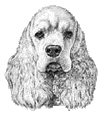 Malocclusion
Malocclusion
![]()
|
|
|
|
Malocclusion results when the upper teeth do not align properly with the lower teeth. Normally the teeth interact in a manner that allows powerful chewing and tearing of food. If the teeth do not align in the correct fashion, this is generally the result of either abnormal jaw growth or misalignment of the teeth themselves. What are the symptoms?Malocclusions can sometimes only be seen on close examination. Chewing abnormalities such as food falling from the mouth may be a symptom. The majority of malocclusion cases seen at our hospitals result from abnormal length of the jaws. If the lower jaw protrudes too far beyond the upper, the animal is said to be undershot. This is sometimes referred to as a "salmon jaw." Conversely, if the lower jaw bones are too short, the animal is said to be overshot. This is occasionally referred to as "parrot mouth." What are the risks?Normally, slight malocclusion presents no great risk to the patient, however, the intake of food and chewing may be somewhat hindered. Most patients are still able to chew quite well. Tarter and plaque will build up excessively on teeth if abnormal wearing surfaces are created. Tooth wear can also be excessive if two teeth constantly grind on each other. Patients with severely undershot (parrot mouth) jaws may have difficulty picking up food so large chunks are ingested more often than smaller ones. In some cases of tooth misalignment, the lower canine teeth may hit the roof of the mouth causing injury and pain. What is the management?Most patients require no treatment to correct the malocclusion. If teeth wear excessively from abnormal grinding, extractions may be necessary. Teeth should be routinely brushed and cleaned to prevent the abnormal build-up of tarter and plaque. Veterinary dental specialists can be consulted if an owner desires to alter the malocclusion. In some instances, "braces" can be put on the puppy to realign the teeth correctly. It is wise not to breed pets with malformed jaws as there is a hereditary link in many affected patients. Race Foster, DVM and Marty Smith, DVM Drs. Foster & Smith, Inc. © 2000 Drs. Foster & Smith, Inc. Reprinted as a courtesy and with permission from PetEducation.com (http://www.PetEducation.com) On-line store at http://www.DrsFosterSmith.com Free pet supply catalog: 1-800-323-4208
|